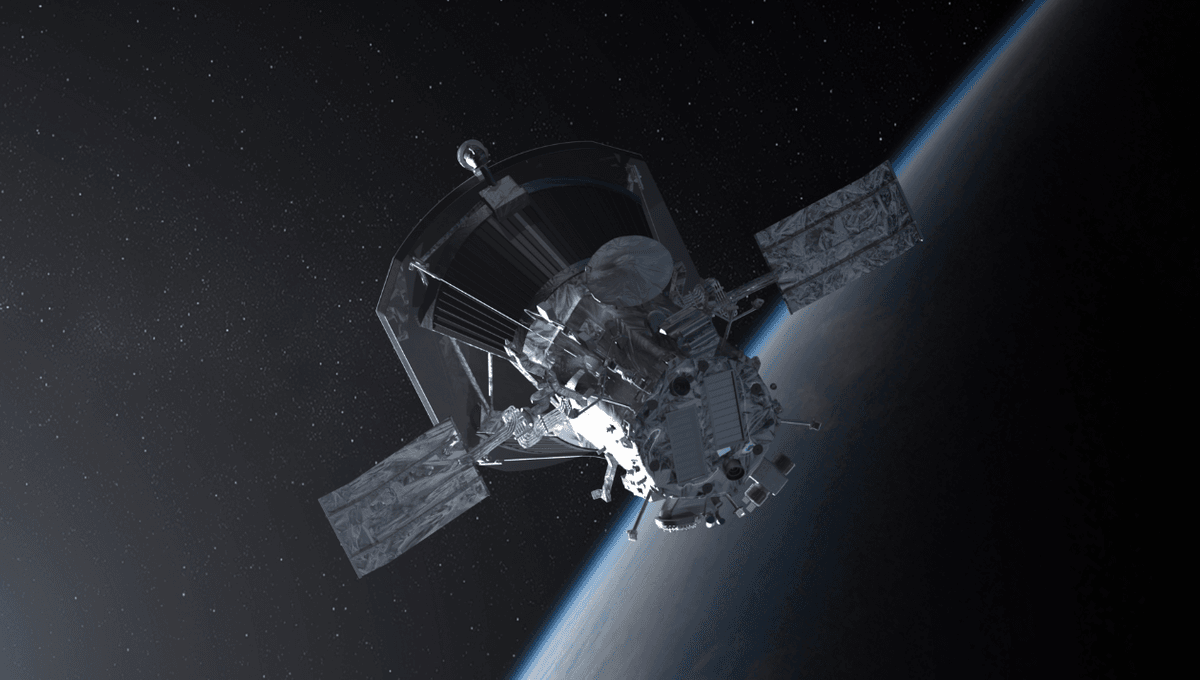
The fastest object ever made by humankind is NASA’s Parker Solar Probe, a spacecraft that cruised through the corona, the Sun’s upper atmosphere, a mere 6.5 million kilometers (4 million miles) from its surface.
It first completed this historic flyby of the Sun in 2021, but achieved its top speeds during its 17th close passage around our star in 2023, clocking 635,266 kilometers (394,736 miles) per hour.
For context, it would take under four minutes to travel to the distance of Earth’s equator at that speed. You’d be able to travel from the Earth to the Moon in just over 36 minutes, or from New York City to Los Angeles in just over 22 seconds.
The Parker Solar Probe reaches these blistering speeds using both engineering technology and the gravitational forces at play in our universe. The spacecraft was launched in August 2018 using the Delta IV Heavy rocket, an extremely powerful launch system that provides the necessary thrust to escape Earth’s gravity and set the probe on its trajectory toward the Sun.
Once in space, it uses a solar-powered propulsion system to fine-tune its orbit. However, much of its speed is acquired by the Sun’s huge gravity, which effectively pulls the probe into its orbit.
Venus, a next-door neighbor of Earth, also plays a role. As the orbits of the Parker Solar Probe and the planet converge, the spacecraft is maneuvered in front of the planet. Venus’s gravity, though modest by celestial standards, then alters the probe’s trajectory and speed. This gravity assist maneuver reduces Parker’s speed relative to the Sun by 10 percent and brings it closer to the Sun.
“No one believed using Venus gravity assists would be possible, because the gravity assist a planetary body can provide is proportional to the body’s mass, and Venus’ mass is so much smaller — only 0.3 percent of Jupiter’s,” Yanping Guo, mission design and navigation manager for the Parker Solar Probe mission at the Johns Hopkins University Applied Physics Lab, said in a 2018 statement.
”You compare the gravity assist Venus can provide to what Jupiter can provide, and you have to do repeated flybys to achieve the same change. Then you’re getting a very long mission duration,” she added.
As Icarus learned the hard way, flying close to the Sun is no easy feat. Despite its proximity to the Sun’s surface, the Parker Solar Probe isn’t exposed to as much heat as you might think because high temperatures do not always translate to actually heating another object.
Temperature measures how fast a particle is, while heat measures energy transfer. The Sun’s corona is less dense than the visible Sun’s surface, so even at high temperatures, little heat is transferred. If you’re struggling to understand how this might work, imagine how you can stick your hand in a hot oven, but not in a pan of boiling water. As such, while the probe travels through million-degree temperatures, its heat shield only heats to about 1,400°C (2,500°F).
While making these flybys, the probe has several scientific objectives, such as understanding the flow of energy that heats and accelerates the solar corona and solar wind, as well as the dynamics of the plasma and magnetic fields.
You may have heard an urban legend that the fastest human-made object was, at one point, a manhole cover that was blasted into space by a nuclear bomb test in 1957. This would also make it the oldest human-made object in space.
It’s a great tale, but largely unfounded and full of glaring plot holes.
Source Link: The Fastest Human-Made Object Ever Could Cross The US In 22 Seconds